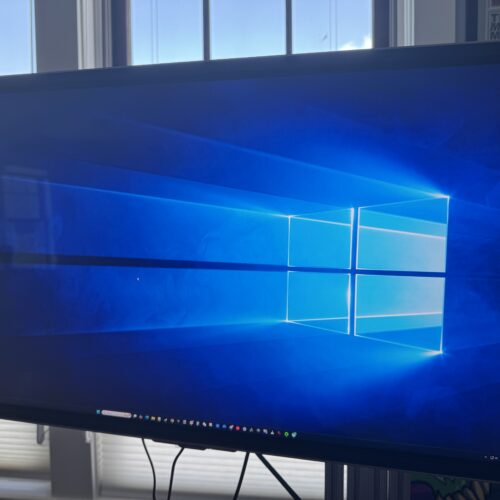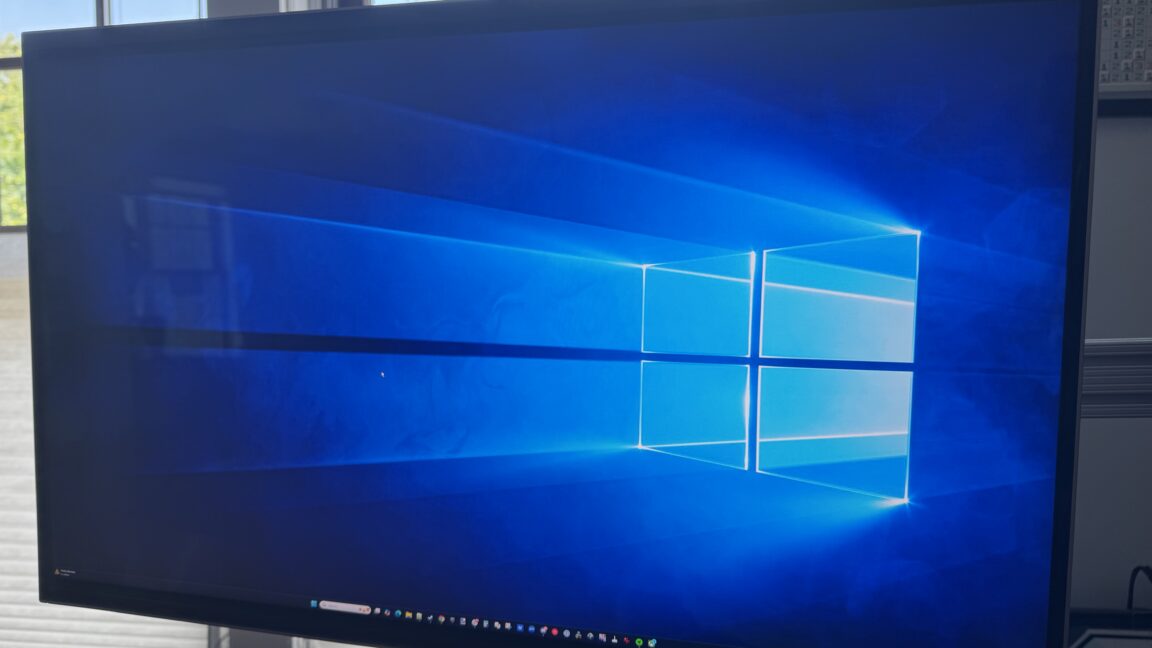Brandywine Realty Trust Beats Q2 Views
Key Points
- Non-GAAP EPS of $0.15 beat analyst estimates by $0.31, while GAAP revenue of $120.6 million topped forecasts by $6.2 million.
- Net loss (GAAP) was $(0.51) per diluted share, driven by $63.4 million in non-cash impairment charges connected to Austin assets.
- Leasing activity and tenant retention improved, but Funds From Operations (FFO, non-GAAP) declined and the payout ratio reached 100%.
Brandywine Realty Trust (NYSE:BDN), a real estate investment trust focused on office and mixed-use properties, announced its second quarter fiscal 2025 earnings on July 23, 2025. The company reported better-than-expected non-GAAP results, delivering Non-GAAP EPS (Funds From Operations, or FFO per share) of $0.15, which surpassed the consensus non-GAAP EPS estimate of $(0.16). GAAP revenue came in at $120.6 million, exceeding estimates by $6.2 million. Despite these beats, the quarter was affected by a GAAP net loss of $(0.51) per diluted share and a significant year-over-year decrease in FFO (non-GAAP) compared to Q2 2024, primarily due to non-cash impairment charges related to assets in Austin, Texas. Overall, while leasing and liquidity metrics showed progress, pressure from asset impairments, high payout ratios, and ongoing headwinds in the office market remained apparent.
| Metric | Q2 2025 | Q2 2025 Estimate | Q2 2024 | Y/Y Change |
|---|---|---|---|---|
| EPS (Non-GAAP, FFO per diluted share) | $0.15 | $(0.16) | $0.22 | (31.8 %) |
| Revenue (GAAP) | $120.6 million | $114.3 million | $125.3 million | (3.7 %) |
| Net Income (Loss) per diluted share (GAAP) | $(0.51) | $(0.16) | $0.17 | -400% |
| Same Store Net Operating Income – Accrual Basis | $66.5 million | $64.8 million | 2.6 % | |
| Cash and Cash Equivalents | $122.6 million | $90.2 million(as of Dec 31, 2024) | 35.9% |
Source: Analyst estimates provided by FactSet. Management expectations based on management's guidance, as provided in Q1 2025 earnings report.
Business Overview and Recent Focus
Brandywine Realty Trust (NYSE:BDN) specializes in the ownership, development, and management of office and mixed-use real estate, with a focus on markets such as Philadelphia, Pennsylvania suburbs, and Austin, Texas. Its portfolio includes both traditional office properties and newer developments, including residential buildings and life science hubs. The firm’s approach leverages targeted geographic expertise and modern, amenity-driven properties to maintain relevance in the evolving real estate environment.
Recently, Brandywine has centered its strategy around geographic diversification, leasing stabilization, and capital recycling through asset sales. Its growth is driven by signing new leases, securing high tenant retention, and completing development projects. Key success factors include the pace of leasing, tenant relationship management, liquidity management, and the ability to address underperforming assets, especially in more volatile markets like Austin.
Quarter Highlights: Leasing, Financials, and Portfolio Activity
The company’s reported results exceeded Wall Street expectations on both Non-GAAP EPS and GAAP revenue, with FFO per share (non-GAAP) coming in at $0.15 compared to an estimated $(0.16), and GAAP revenue at $120.6 million, ahead of the $114.3 million forecast. FFO (non-GAAP) dropped 31.3% from the prior year period, reaching $26.1 million. The quarter’s headline result included a net loss of $(0.51) per diluted share (GAAP), as non-cash impairment charges totaling $63.4 million, relating to Austin office assets, weighed down the bottom line. This impairment related to portfolio assets located in Austin, Texas.
Leasing showed improvement, with 234,000 square feet of new and renewal leases signed across wholly owned properties, and 461,000 square feet including joint ventures. Tenant retention surged to 82%, a sharp increase from 55% in the prior quarter. Tour activity, a sign of potential tenant demand, jumped 66% quarter-over-quarter. The core portfolio closed the period at 88.6 % occupied and 91.1 % leased, underscoring steady – if not robust – operational stability. In the portfolio, both same store net operating income (NOI) and cash-based NOI moved higher. Same store NOI on an accrual basis increased 1.0%, and cash-based same store NOI rose 6.3%.
Development leasing and asset sales were major themes. The Solaris House, a residential project in Austin, reached 89% leased, supporting the company’s push into multifamily assets. One Uptown, a new office development, signed a lease for 100,000 square feet. The company also increased its 2025 annual asset sales guidance to $72.7 million after closing the sale of a low-occupancy Austin property for $17.6 million and entering into an agreement to sell another for $55.1 million as of June 30, 2025. This repositioning supports Brandywine’s strategy of recycling capital from challenged markets into higher-performing assets and paying down debt.
Brandywine maintained a strong liquidity position, ending the quarter with $122.6 million in cash and no outstanding balance on its $600.0 million unsecured credit facility as of June 30, 2025. The company also completed a $150.0 million bond issuance at 8.875% interest (7.04% yield to maturity) in June 2025, and repaid a $43.6 million construction loan on July 23, 2025. However, rising interest costs were evident, with interest expense increasing from $29.5 million in Q2 2024 to $32.3 million.
Another focal point of the quarter was the company’s payout ratio. The dividend payout for the second quarter matched FFO per share at 100 %, following an even higher first half payout of 107.1 %. This high ratio prompts questions around long-term dividend sustainability unless operational cash flow improves as new projects stabilize.
Funds From Operations (FFO) is a measurement real estate investment trusts use that adds back depreciation and amortization to net income, offering a clearer view of actual cash performance. The company uses FFO per share as its core profitability metric, while ‘same store net operating income’ shows performance on stabilized properties held throughout the comparison periods.
Outlook and Guidance
Management released updated guidance for fiscal 2025. The company now expects full-year FFO per share (non-GAAP) between $0.60 and $0.66, with a midpoint above analyst consensus. Assumptions include year-end core occupancy of 88–89%, ending leased rate of 89–90 %, and steady same store NOI growth between 0% and 1% on an accrual basis (2–3% on a cash basis). The company expects a tenant retention rate of 62–63%, minimal lease expirations through 2026, and no planned acquisitions. Development work is set to start on only one new project this year, and asset sales will be focused outside of land disposals.
The company’s leadership did not declare a change in the quarterly dividend. Management highlighted that the payout ratio remains high but expressed confidence that stabilization of new developments and successful lease-up activities will improve coverage after 2025. Continued asset sales, leasing progress in development projects, and positive tour activity are expected to be key drivers for operational improvement. Elevated impairment charges, particularly in the Austin market, were reported, and future performance will likely depend on the value realized from asset sales and the lease-up of new properties.
Revenue and net income presented using U.S. generally accepted accounting principles (GAAP) unless otherwise noted.
Where to invest $1,000 right now
When our analyst team has a stock tip, it can pay to listen. After all, Stock Advisor’s total average return is 1,037%* — a market-crushing outperformance compared to 182% for the S&P 500.
They just revealed what they believe are the 10 best stocks for investors to buy right now, available when you join Stock Advisor.
*Stock Advisor returns as of July 21, 2025
JesterAI is a Foolish AI, based on a variety of Large Language Models (LLMs) and proprietary Motley Fool systems. All articles published by JesterAI are reviewed by our editorial team, and The Motley Fool takes ultimate responsibility for the content of this article. JesterAI cannot own stocks and so it has no positions in any stocks mentioned. The Motley Fool has no position in any of the stocks mentioned. The Motley Fool has a disclosure policy.









